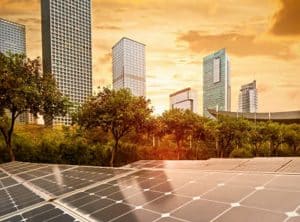Presented by Energy Matters team member Virginia, we take a look at some of the stories from Australia and around the world recently added to our renewable energy news section.
This week, Virginia reports on Perth Zoo going solar, solar staving off electricity infrastructure expenditure, renewables the key to a low carbon future and the water footprint of coal vs solar.
In this episode:
Perth Zoo is now home to the largest solar panel array in Western Australia, with 755 solar panels expected to generate a third of the facility’s annual energy needs. The 237 kilowatt system is expected to save the Zoo around $100,000 per year. The installation was jointly funded by the federal and state governments as part of the $94 million dollar Solar Cities program. Read more.
According to an ABC report, the rapid uptake of solar is one of the factors behind a decision to delay work on a 330 kilovolt transmission line in New South Wales. The $227 million dollar Transgrid project was due to start in the middle of next year but will now be on hold for at least three years. Read more.
A new report titled “Burning our Rivers” states thermo-electric based energy production is the fastest growing use of freshwater resources in the US. The related study found that coal fired generation withdraws around 60 thousand litres per megawatt hour of electricity produced. Solar PV in contrast is a far more water friendly way to generate electricity, withdrawing only around 874 litres. The report notes that every body of surface water in the US has arguably also been impacted by mercury contamination from coal fired plants. Read more.
Instead of lavish investments to make carbon capture and storage commercially viable and environmentally safe, a new report suggests further support existing renewable energy technologies is the key to a low carbon energy future. Current renewable electricity generation methods, combined with better infrastructure, could supply 80% of US electricity generation in 2050, according to the National Renewable Energy Laboratory report. Read more.





































